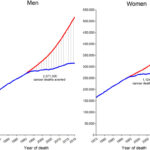— By Andrea M. Pampaloni, Ph.D.
Falls are the leading cause of injuries and accidental deaths for people over the age of 65, and the risk is 31 percent higher for people with obesity.
Falls are the leading cause of injuries and accidental deaths for people over the age of 65. The risk continues to increase with age, contributing to 70 percent of accidental deaths among people 75 years or older. For people with obesity, the risk is 31 percent higher.
Many factors contribute to falls among older adults including increased age, medications, cognitive impairment and sensory deficits. The fear of falling can also be a risk factor for some. Older people with obesity are at even higher risk of falls for a variety of reasons. For example, people with obesity often take multiple medications, which can contribute to risk.
Further, regardless of age, people with obesity often are more likely to experience other risk factors such as limited mobility, impaired gait, reduced muscle strength, and slow reaction times, all of which contribute to falls. Similarly, obesity can have a negative effect on muscle function at any age, which further increases the likelihood of falling since muscle weakness is another factor independently related to an increased risk of falling. Having obesity can also exacerbate the detrimental effects of a fall, which can contribute to a reduced quality of life.1
Gait speed — defined as the time a person takes to walk a specified distance on level surfaces over a short distance — can also be a predictor of falls. Older adults expend more energy while walking resulting in a lower gait speed, which is a strong predictor for falls among older adults.2 Research also demonstrates an association between gait speed and abdominal obesity whereby gait speed is significantly and negatively associated with abdominal and general obesity in older population.
Weight loss and increased mobility are recommended both to reduce the risk of falls and the negative outcomes related to the fall. A comprehensive, supervised program, such as a Very Low Calorie Diet (VLCD), provides a multi-faceted approach to weight loss through diet, change in eating habits, and increased activity based on the individual needs and abilities of each patient. Taking preventive measures offer not only health benefits, but allow older patients to maintain their independence longer, which can reduce occurrences of depression and anxiety.
Sources:








![[keyword]](https://librareview.com/wp-content/uploads/2024/02/education-5517017_960_720-150x150.jpg)








